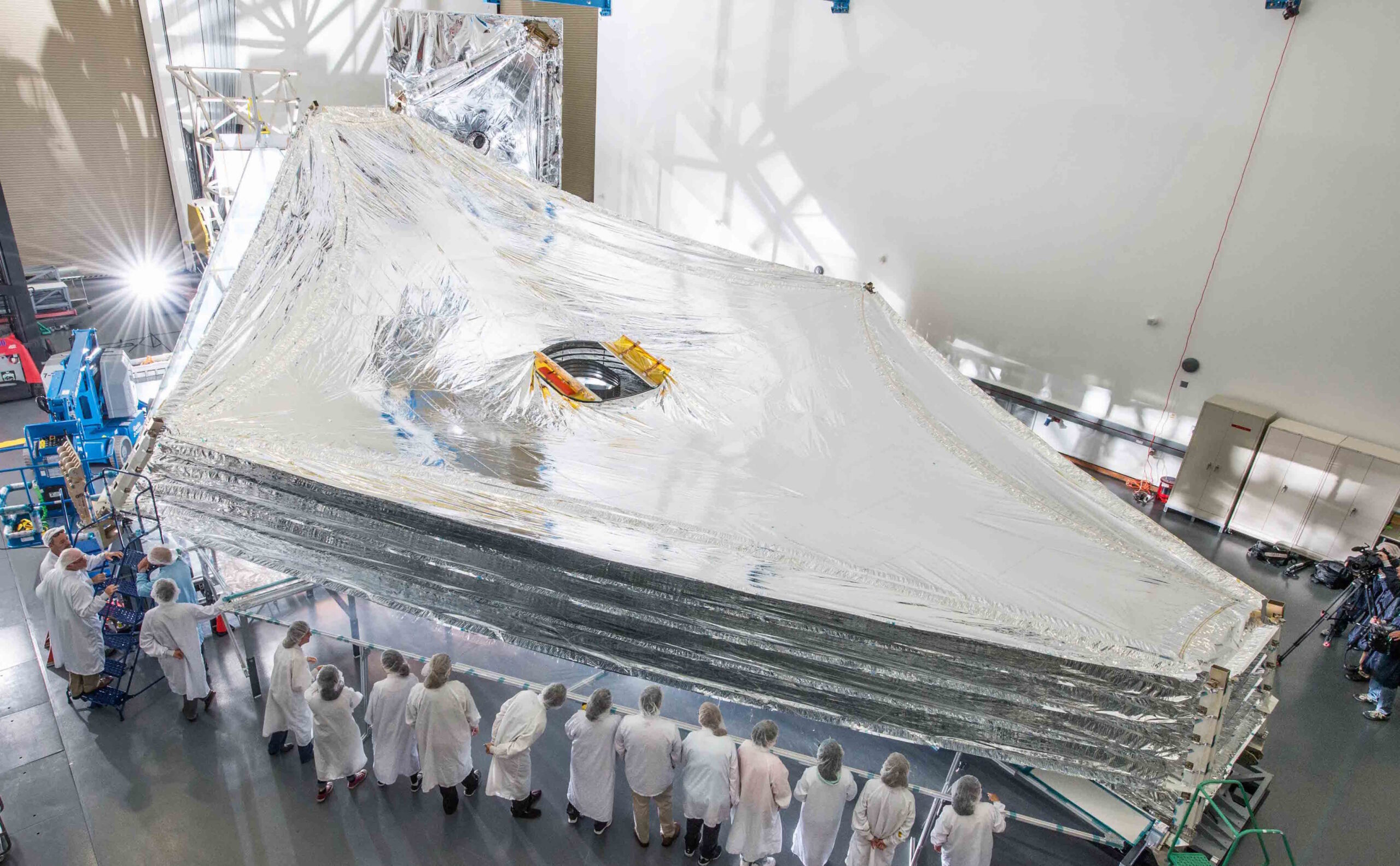Stay Up to Date
Submit your email address to receive the latest industry and Aerospace America news.
NASA cites sunshield tears, propulsion leaks for six-month delay bringing launch to May 2020
NASA announced on Tuesday that sunshield tears and propulsion leaks discovered during tests of the James Webb Space Telescope are spurring the agency to delay its launch once again, this time to May 2020, a move that looks sure to burn through the funding limit authorized by Congress.
NASA’s Acting Administrator Robert Lightfoot said during a conference call with reporters Tuesday that NASA’s “highest priority science project” would be delayed by six months, and that this delay creates the “likelihood” of pushing the project’s overall cost past the $8 billion construction-cost cap approved by Congress. This marks the latest in a series of cost and schedule overruns since Webb’s development began in the 1990s, when it was originally slated for a 2007 launch at a cost of $500 million.
Lightfoot added that the additional costs for the delay are still under review but promised NASA will deliver a report about the telescope to Congress “this summer”
“If we breach the [$8 billion] cost that was laid out in congressional appropriations the project will need to be reauthorized by Congress,” Lightfoot said. “We have briefed the congressional staff about the likelihood of passing this mark and informed them that the observatory is complete, it’s just a matter of putting the two halves together and getting the testing done of the total observatory.”
The Webb telescope is scheduled to be launched on an Ariane 5 rocket to an orbit 1.5 million kilometers from Earth. A sun shield must block light from the Sun and moon so Webb can collect infrared light for scientists who will study the early universe and examine exoplanets.
Astronauts will be too far away to repair the Webb telescope in space like Hubble, which is in low Earth orbit, so NASA is being cautious during tests and assembly of Webb, said NASA’s Thomas Zurbuchen, the associate administrator in charge of the Science Mission Directorate, during the call.
Leaks in Webb’s thruster valves and tears in the multi-layer sunshield that will unfurl in space to a tennis court size are technical problems that require a delay, Zurbuchen said, adding that NASA also was bad at estimating how long it would take to assemble the telescope.
“The sunshield tensioning system, the cables that pull the sunshield membrane into its shape developed too much slack during the deployment, creating a snagging hazard,” Zurbuchen said.
The NASA press call follows a report published in February by the Government Accountability Office assessing that Northrop Grumman had fallen behind schedule and over budget on assembling the telescope.
Zurbuchen said NASA is “70 percent” confident that the launch will occur in May 2020, but he also expressed frustration with announcing another delay.
“I’d rather not have this kind of call like we have right now, I’d rather have always 100 percent success,” he said.
About Tom Risen
As our staff reporter from 2017-2018, Tom covered breaking news and wrote features. He has reported for U.S. News & World Report, Slate and Atlantic Media.
Related Posts
Stay Up to Date
Submit your email address to receive the latest industry and Aerospace America news.





